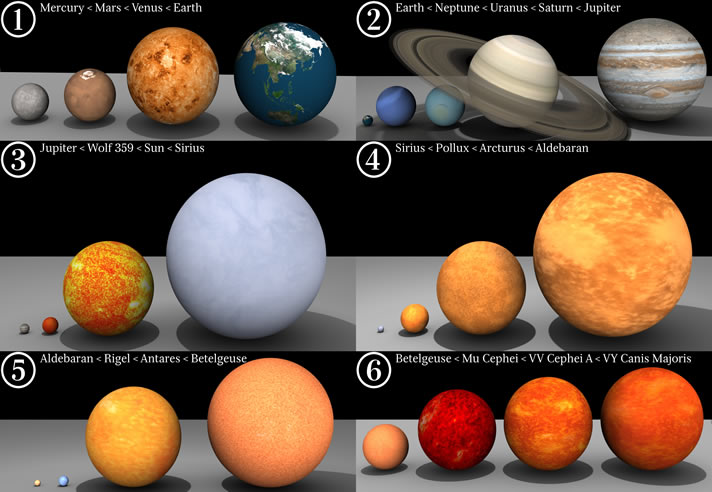

 |
 |
 |
 |
 |
 |
 |

The sun, as you may already know, is a star just like the ones you see in the sky on a clear night. A star is an incredibly massive stellar object made up of hydrogen and helium. When a star forms, an incredible amount of hydrogen is mashed together until there is so much of it that it creates a gravitational field and collapses in on itself. Gravity continues to pull together more and more hydrogen atoms creating immense amounts of heat and pressure at the center of the fetal star. At some point, the pressure and heat at the core is so intense that the hydrogen atoms begin fusing into helium atoms. Once a sustainable fusion reaction has been achieved, the star has been "born," and a huge blast of energy will expel any excess gas and dust. This residual material will continue to orbit the new star, and contains the seeds of planets, asteroids and other celestial objects that we are familiar with. All of this will take several billion years to accomplish.
We have discovered that our sun is just an average sized star, with other stars that are both much bigger and much smaller. We've also discovered that our sun is about in the middle of its life cycle, with only about 5 billion years left in its current state (only?!), and that during that time it has grown larger, brighter and hotter, which may explain why there has only been life on Earth for the last 1 billion years. As the hydrogen in the sun is used up, it will grow steadily larger and hotter. Scientists predict that in about a billion years the sun will have grown so hot that all the liquid water on Earth will evaporate entirely, ending life as we know it. Once the sun has expended its hydrogen fuel, it will continue to heat up until the point when helium fusion begins to happen, at which point it will balloon up 250 times its current size, becoming a Red Giant. During this phase, the sun's radius will extend past the current orbit of Earth, completely incinerating Venus and Mercury. It is possible that Earth will have moved far enough away from the sun in 5 billion years to avoid incineration, but even if it were spared it would then be so close to the sun that any water on the planet would evaporate instantly and the atmosphere would escape into space. Earth would become a charred and barren furnace, much like Mercury is right now.
When the Sun does finally breathe its last, it won't be terribly spectacular. Once all the helium in the star has fused into carbon, thermal pulsations will cause the Sun to shed its outer layers, creating a planetary nebula and revealing the superhot stellar core. At this point the Sun will become a White Dwarf. A White Dwarf has no nuclear reactions going on inside its core, since it is the core of a burnt out star. White Dwarves are superdense. They have roughly the same mass as our sun currently does, but only have a volume about the size of Earth. White Dwarves will cool off and burn out over several billion years, and the nebula that is left behind will be a staging area for the creation of a new star in another few billion years.
The Sun's closest neighbor is Alpha Centauri, which is actually a system composed of three separate stars. Alpha Centauri itself is a binary star system whose two stars are named Alpha Centauri A and Alpaha Centauri B. Both stars are roughly the size of our sun, with A Cen A being slightly bigger, and A Cen B being slightly smaller. The third star, referred to as Alpha Centauri's companion star, is called Proxima Centauri. It is a small red dwarf star that is so dim it cannot be observed without the aid of a telescope. Collectively these stars make up a group that is simply called Alpha Centauri. Technically Proxima Centauri is the closest star to the Sun, at just around 4 light years away. So there are some stars in the Universe that are much smaller than the sun. But there are also some that are so massive that they make the sun look like a grain of sand. Supergiants and Hypergiants are some of the most massive objects in the universe. The largest known star is VY Canis Majoris, a hypergiant star that resides some 4,900 light years from our sun in the constellation Canis Major. VY Canis Majoris has a radius that is between 1,800 and 2,100 times as large as the sun. If placed in our solar system, it would extend out to the orbit of Uranus. Below is a chart comparing the size of different celestial objects, starting as small as Mercury and going all the way up to VY Canis Majoris.

As you can see, the star that put our sun off the map, Aldebaran, is completely dwarfed by other stars like Betelgeuse, and even those stars are miniscule compared to VY Canis Majoris!
Click here to continue the tour into the Solar System!